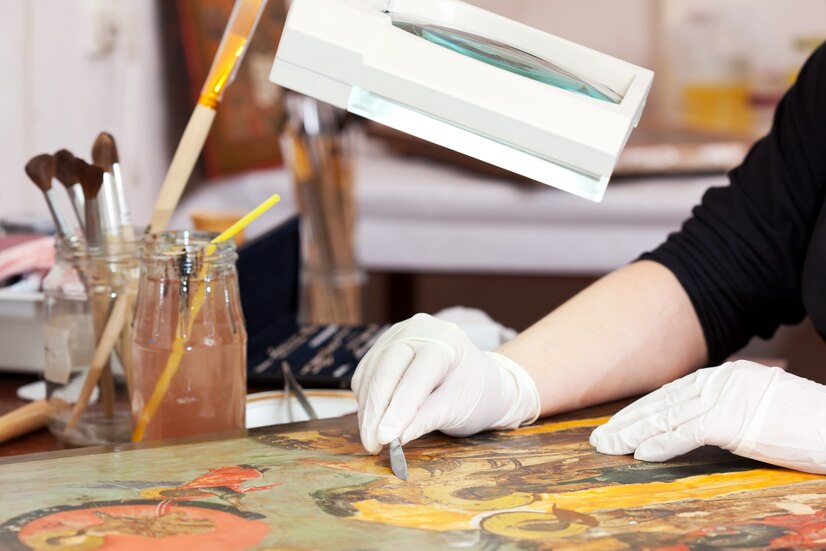The art license, because it moves towards 2025, has already seen many changes through new techniques, changes in consumers’ preference and concerns about stability. At Trendy Threads, we always keep an eye on the latest trends across various creative fields, and art licensing is no exception.The development of art licensing, where artists are licensed their work for use on different products, will convert to methods that will overthrow the industry. If you own a designer, artist or brand, it would be important to understand these trends.
The Future of Art Licensing:
Let’s explore what’s new and how artists can make the most of it.
1.The Rise of Digital Art and NFTs:
By 2025, Digital Art and NFTS will be much larger in art licensing. With Dag -to -Day technology going forward, several artists create digital pieces that are unique and easily licensed for business use. NFT has taken the art world from the storm as they let artists prove their ownership and sell their tasks digitally. Companies are now interested in exclusive digital art to use in everything from online ads to goods; This opens further licensing opportunities for artists.
2.AI-Generated Art and Licensing:
Artificial intelligence is slowly taking over the imaginative world, and art licensing is no different. By 2025, AI-generated art will be licensed for use in many industries. With the rise of using AI to help create unique pieces of art, more artists are partnering with some brands to license and utilize AI-generated art. This trend may open new doors for artists and businesses, giving a new way to create and share art.
3.Eco conscious art and sustainability:
Sustainability art is another trend in licensing that is increasing. With the growing demand for environmentally friendly products, companies are looking for art that match stability. This can arise as a characteristic of recycled materials, promote environmental messages or even an environmentally conscious subject. Artists who focus on permanent practice, whether it is the material they use or the subjects they portray, will possibly see more opportunities in licensing their tasks. As consumers become more environmentally conscious, the brands will also see working with artists who show these values.
4.Collaborations Across Industries:
As industries such as fashion, games and decor continue to expand, we can expect to see more cooperation between the cross -industry. By 2025, art licensing may be a common practice for a wide range of industries, from virtual reality to fashion games. For example, video game companies can licenses art for assets or clothing in the game, collaboration with artists to introduce their designs on clothes. This trend will make art licensing more diverse and accessible, so that artists can reach broad target groups in different fields.
5.Global Reach and Online Licensing Platforms:
With the emergence of digital platforms, artists will have more ways to licenses their work than ever. The website and apps dedicated to art licensing will continue to grow, so that artists can easily get in touch with companies who want to use their work. This will help make the increased Access Art Licensing Market Global, which will provide artists worldwide an opportunity to licenses their works. This also means that small artists who used to have trouble finding customers earlier will now have more opportunities to show their art and license.
Best Ways for Art Licensing:
So, how can artists make the most of art licensing in 2025? Here are some key steps to take:
1.Create a Powerful Online Presence:
Visibility is the key to getting your art licensed. You need to have an active online presence, like a portfolio on Instagram or Behance, so that you can attract potential licensees. It is crucial to show your work in a way that’s easy for companies to find and view.
2.Join Licensing Platforms:
There are many platforms where artists can list their work for licensing opportunities. Websites like Artlicensing.com and Design Pool help artists add artists in search of Lisenkunstverk. These platforms make it easy to meet and work with both sides.
3. Understand Licensing Agreements:
Always study the terms and conditions before licensing your art. Know the duration that the license will be held, what scope of use it grants, and how you will be compensated for the work. You could hire a lawyer to assist you in creating an equitable licensable contract.
4.Focus on Unique Styles and Trends:
Be aware of the industry’s trends and cabinets that match today’s requirements. Whether it is abstract, minimal or nature -inspired art, to understand what is in demand, will make your work more attractive to a possible license.
5.Network with Brands:
Sometimes the best opportunities come directly from connection. Now brands and businesses that match the style of your art. Sending a well -prepared pitch with a portfolio can open the doors for new licensing agreements.
The trends of the licensing art world, on the rise for 2025, look incredible both for artists and businesses. There is the aspect of digital art, NFTs, sustainability, AI, and many other trends marking an opening of possibilities in the licensing world. For artists, such a context unfolds several more channels for monetizing their works and going further than they used to.Keep following us https://trendythreads.net/for more updates on the latest trends!




